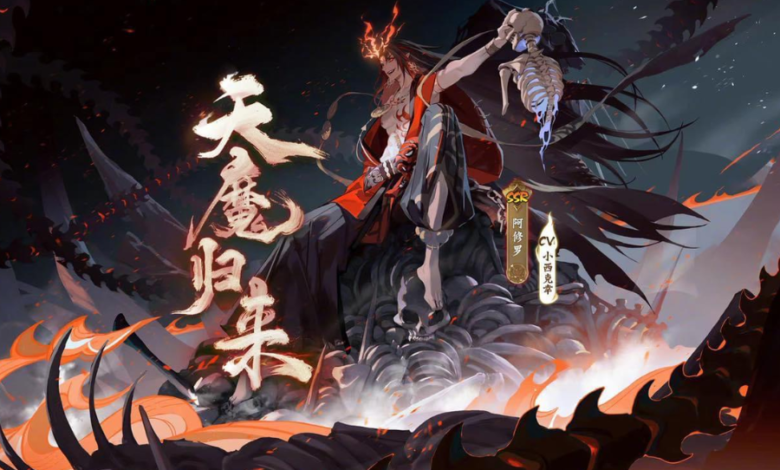Asuratoom: Unveiling the Mystique

Ever heard whispers about Asuratoom and wondered what’s behind the buzz? This intriguing name has roots that blend ancient lore with modern narratives, making it a captivating topic of exploration. Let’s uncover the history and contemporary relevance of Asuratoom.
Origins
Asuratoom’s origins trace back to a confluence of cultures and myths. Its name suggests a connection to the Asura, beings found in Hindu and Buddhist traditions. The Asura are often depicted as powerful entities that embody both good and evil, creating a complex narrative that transcends simple categorization. This duality is at the heart of many ancient stories, where Asura figures serve as both adversaries and allies to gods.
But Asuratoom isn’t just a relic of the past; it resonates with modern themes. The concept has evolved, intertwining with contemporary storytelling, art, and even digital culture. Asuratoom embodies the ongoing struggle between light and darkness, which is a recurring motif in various forms of entertainment today.
Cultural Significance
In many cultures, names carry profound significance. Asuratoom’s multifaceted nature reflects the complexities of human experience. It prompts us to think about our own dualities—our capacity for both creation and destruction. This makes Asuratoom not just a name but a mirror reflecting our inner conflicts.
Throughout history, societies have revered and feared the unknown. Asuratoom invites exploration of that unknown, encouraging discussions about morality, power, and the choices we make. In literature, we often see characters that resonate with the Asura archetype—heroes who grapple with their inner demons while navigating a world filled with uncertainty.
Modern Interpretations
Asuratoom’s relevance in today’s society can be seen in various mediums. In literature, we find narratives that draw from its essence. Authors often create characters with Asura-like qualities—flawed yet relatable figures who face overwhelming challenges. This complexity adds depth to their journeys, allowing readers to engage with themes of redemption and transformation.
In film and television, the Asuratoom concept is often explored through story arcs that depict the battle between good and evil. Many popular franchises borrow elements from this ancient lore, weaving them into plots that captivate audiences. The idea of an internal struggle resonates strongly, providing viewers with characters they can empathize with as they confront their own life choices.
Symbolism
At its core, Asuratoom symbolizes the ongoing battle within each individual. It represents the struggle between our higher aspirations and base instincts. This duality plays a significant role in personal development, pushing individuals to confront their fears and insecurities.
The Asura archetype serves as a reminder that darkness exists within us all, but so does the potential for light. This balance is crucial in many philosophies, urging us to embrace our complexities rather than shun them. The name Asuratoom encapsulates this journey of self-discovery and acceptance.
Artistic Expressions
Artists have long drawn inspiration from mythological themes, and Asuratoom is no exception. Visual artists often depict scenes that capture the tension between light and darkness, using the Asura imagery to convey powerful emotions. These artworks invite viewers to reflect on their own experiences and the battles they face in their lives.
In music, Asuratoom influences can be seen in lyrics that explore themes of conflict and resolution. Musicians harness this rich tapestry of emotions to create songs that resonate with listeners on a personal level. The interplay between struggle and triumph often mirrors the narrative arcs found in Asuratoom-inspired tales.
The Digital Age
In our increasingly digital world, Asuratoom finds new life in video games and online storytelling. Game developers often create characters that embody the Asura archetype, allowing players to engage in narratives that challenge their morals. These interactive experiences provide an opportunity for players to explore their choices and consequences, reflecting the complexities of the Asuratoom lore.
Social media platforms have also become a space for discussing Asuratoom. Creators and influencers share their interpretations, connecting with audiences who resonate with its themes. This engagement fosters a community that thrives on shared experiences, allowing individuals to explore their own dualities in a supportive environment.
Conclusion
Asuratoom serves as a rich tapestry woven from threads of ancient mythology and contemporary narratives. Its exploration of duality, morality, and personal struggle resonates deeply with our human experience. As we navigate our own lives, the themes encapsulated by Asuratoom remind us of the complexities we all face.
By examining the significance of Asuratoom, we gain insight into not just the past but also our present and future. It encourages us to embrace our complexities, confront our fears, and strive for balance in a world that often feels divided.
Whether through literature, art, or modern media, Asuratoom continues to inspire and provoke thought. It beckons us to explore our inner landscapes, inviting us on a journey of self-discovery that is as relevant today as it was in ancient times. So the next time you hear whispers about Asuratoom, remember that it represents more than just a name—it encapsulates the eternal struggle within us all.




